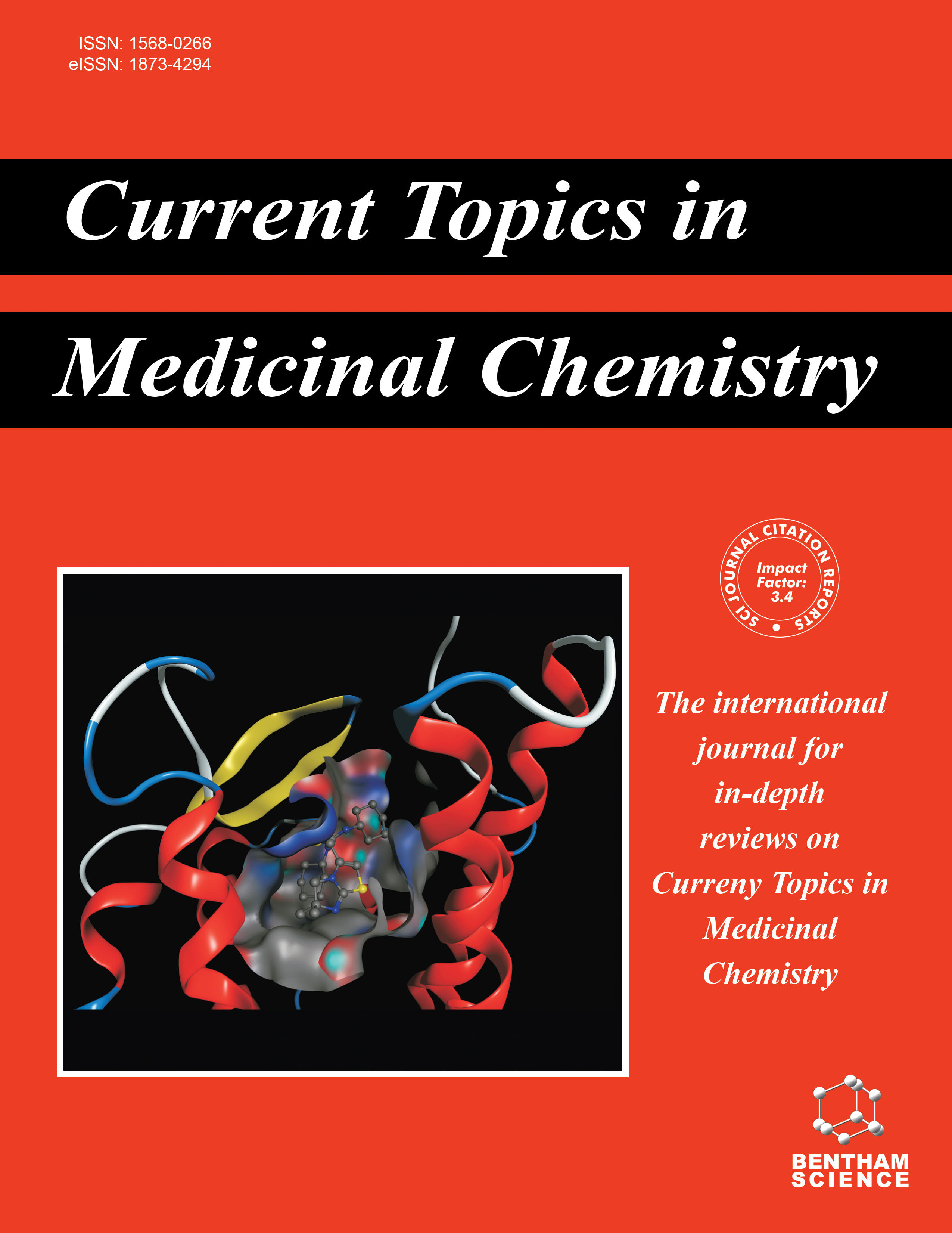- Home
- A-Z Publications
- Current Topics in Medicinal Chemistry
- Previous Issues
- Volume 10, Issue 16, 2010
Current Topics in Medicinal Chemistry - Volume 10, Issue 16, 2010
Volume 10, Issue 16, 2010
-
-
Editorial [Hot topic: Current Topics in the Development of Radioligands for Positron-Emission Tomography Imaging (Guest Editors: Andrew G. Horti and Robert F. Dannals)]
More LessAuthors: Andrew G. Horti and Robert F. DannalsMedicinal radiochemistry involves design, synthesis and evaluation of radiotracers for emission tomography imaging. The development of new radiotracers is based on the structure-imaging properties relationships, suitability for radiolabeling and safety properties. Medicinal radiochemistry emerged over the last three decades mainly as a result of the rapid advances in positron-emission tomography (PET) and single photon Read More
-
-
-
Radioligands for the Angiotensin II Subtype 1 (AT1) Receptor
More LessAuthors: William B. Mathews and Zsolt SzaboOver the last years, ligands for angiotensin II subtype 1 receptor (AT1R) have been developed as an alternative to the use of angiotensin-converting enzyme (ACE) inhibitors for controlling high blood pressure. Radiolabeled versions of these ligands have proven vital to the development of more potent and specific drugs for the treatment of hypertension. Imaging studies using radiolabeled AT1R ligands have also elucidated the ro Read More
-
-
-
Radionuclide Based Imaging of Prostate Cancer
More LessProstate cancer (PCa) is the second leading cause of cancer deaths in American men. Early detection of PCa by blood tests for elevated levels of prostate-specific-antigen (PSA) has lead to early treatment and a reduction in death rates. However, PSA level alone does not distinguish between PCa and normal conditions that cause elevated PSA. Furthermore, because PCa can be a very slow growing cancer, even confirmation o Read More
-
-
-
Radiolabeled Nucleoside Analogues for PET Imaging of HSV1-tk Gene Expression
More LessAuthors: Mian M. Alauddin and Juri G. GelovaniThe HSV1-tk gene has been explored as a reporter and/or suicide gene in molecular imaging of gene expression. Gene therapy with HSV1-tk and the use of this gene as a marker have been applied in patients with various forms of cancer. However, the conditions for clinical gene therapy protocols have yet to be optimized. A method to monitor the activity of HSV1-tk in vivo would be extremely useful to optimize clinical ge Read More
-
-
-
The Renaissance of the 68Ge/68Ga Radionuclide Generator Initiates New Developments in 68Ga Radiopharmaceutical Chemistry
More LessAuthors: Frank Roesch and Patrick J. Riss68Ge/68Ga radionuclide generators have been investigated for almost fifty years now, since the cyclotronindependent availability of positron emitting 68Ga via the 68Ge/68Ga system had always attracted researches working in basic nuclear chemistry as well as radiopharmaceutical chemistry. However, it took decades and generations of research (and researchers) to finally approach a reliable level of 68Ge/68Ga ge Read More
-
-
-
Labeling Strategies of Peptides with 18F for Positron Emission Tomography
More LessAuthors: D. E. Olberg and O. K. HjelstuenA variety of peptides labeled with the positron emitting radionuclide fluorine-18 have shown promise as tracers for use in positron emission tomography (PET) for the detection of malignancies. Peptides can be produced with a formidable versatility allowing them to target a vast diversity of uniquely expressed or overexpressed receptors associated with pathological conditions. The quantitative nature of PET gives the opp Read More
-
-
-
[11C]Phosgene: A Versatile Reagent for Radioactive Carbonyl Insertion Into Medicinal Radiotracers for Positron Emission Tomography
More LessAuthors: Dirk Roeda and Frederic Dolle[11C]Phosgene has been playing a relatively modest but continuous and manifest role all along the history of radiochemistry for Positron Emission Tomography. It acts as a radiolabelling agent through carbonyl insertion, usually between heteroatoms, and benefits from a high chemical reactivity allowing for short reaction times. The aim of this review is to give an overview of this radiochemistry from its beginning until the present Read More
-
Volumes & issues
-
Volume 25 (2025)
-
Volume 24 (2024)
-
Volume 23 (2023)
-
Volume 22 (2022)
-
Volume 21 (2021)
-
Volume 20 (2020)
-
Volume 19 (2019)
-
Volume 18 (2018)
-
Volume 17 (2017)
-
Volume 16 (2016)
-
Volume 15 (2015)
-
Volume 14 (2014)
-
Volume 13 (2013)
-
Volume 12 (2012)
-
Volume 11 (2011)
-
Volume 10 (2010)
-
Volume 9 (2009)
-
Volume 8 (2008)
-
Volume 7 (2007)
-
Volume 6 (2006)
-
Volume 5 (2005)
-
Volume 4 (2004)
-
Volume 3 (2003)
-
Volume 2 (2002)
-
Volume 1 (2001)
Most Read This Month
Article
content/journals/ctmc
Journal
10
5
false
en


